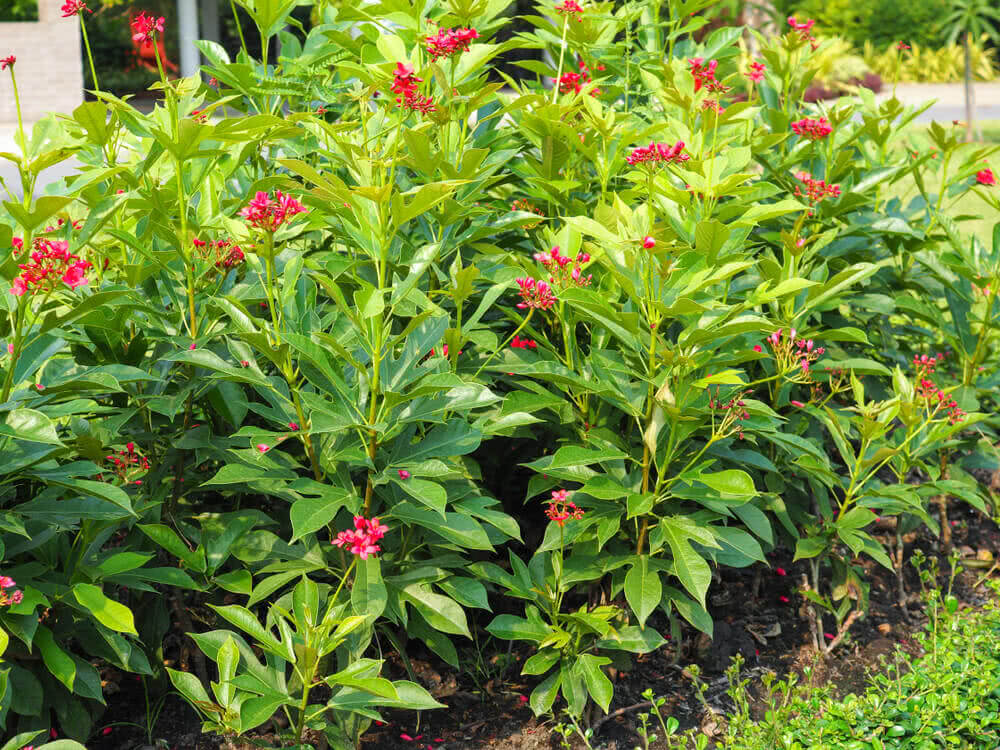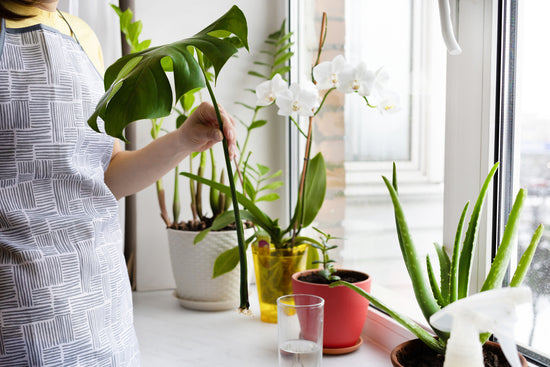Most people like to grow different types of plants and flowers in their gardens. While growing herbs and spices in the garden are trending nowadays, you must also think of growing ornamental plants in your garden. Ornamental flowers are mostly grown for their aesthetic appeal. These plants may or may not have any health properties or aroma. They are primarily grown to enhance the beauty of the gardens.
Have you ever thought of growing plants that can make your garden colorful and attractive? The Jatropha plant bears beautiful flowers that attract beautiful butterflies. Its two species viz. Jatropha multifida and Jatropha integerrima are predominantly found in Central and South Florida.
In many countries, it is also known as Euphorbia, belonging to the genus Euphorbiaceae. It is native to Central America, but they are easily found in the West Indies, Cuba, and many other countries across the globe. In this article, we shall be learning all about the Jatropha plant.
Features of Jatropha Plant
Some of the best and most interesting features of Jatropha are listed below.
-
Type: The Jatropha plant can be classified as a large deciduous shrub or a small deciduous tree. It can grow up to 5 meters in height and comprises gray barks that are smooth in texture.
-
Fence plant: Though great for beautifying gardens, you should note that all its parts can be poisonous when ingested. Therefore, you must watch your pets and kids when they play around it. Also, you can use it as a fence for the flowering plants and fruit trees of your garden, as animals don't feed on it.
-
Size of flowers: Jatropha is one of the few ornamental plants that bear bright red flowers. Some varieties may also produce pinkish-red flowers. These flowers grow in clusters, and their petals can grow up to 1 inch in length.
-
Attracts different creatures: It attracts both hummingbirds and butterflies. Butterflies of swallowtails, zebra longwings, and monarchs are mostly drawn to its flowers. Therefore, growing this plant in your garden can be a great decision.
Buy Flowering Plants
How to plant Jatropha Ornamental plants?
Jatropha plants can be easily grown as they are low-maintenance plants. They can easily survive drought and grow in partial or full sunlight. Here are a few factors that you must check before planting it in your garden:
Soil conditions & temperatures
Well-drained soil is required to grow this plant. It can be grown easily on wastelands and in regions where the soil quality is poor. It can grow best in areas where temperatures range from 10 to 11 degrees Celsius. Though snow and frosty conditions may damage these plants, they tend to recover faster when the conditions get better. Also, when the salinity of the soil is high, it is not conducive to its growth.
Pruning
These plants can handle pruning well. If pruning is avoided for these plants, they can easily grow into a tree giving out multiple trunks and branches. With regular pruning, you can convert it into a shrub or espalier. Maintaining a single-trunk tree by carefully pruning the remaining trunks is possible. Pruning these plants will help you to groom them in a confined space. You may even grow them in a large pot or container if you want to grow them in narrow passages like a patio.
Buy Pruning Saw
Water & Sunlight
Jatropha plants can grow well in shady and low-light conditions. Therefore, you can grow it in areas that don't receive direct sunlight. It does not need much water to survive and is usually grown in areas with low rainfall. Watering the plant thrice a week could be sufficient if it is planted in shady areas. However, you might have to water it regularly if it is receiving direct sunlight. Maintain the moistness in the soil if it is planted in a container. Plant nutrients can be provided, but don't give extra plant food during winter.
Due to all these benefits and features of the Jatropha plant, you can consider growing it in your garden. Get the best quality seeds on Ugaoo. You can check the website for more information on various plant species and different types of planters. For instance, you can use their blog section to find which live fence plants can be used to protect fruit and flower-bearing plants.
Visit Ugaoo.com today and explore different kinds of plants to grow in your garden!
Read More-










